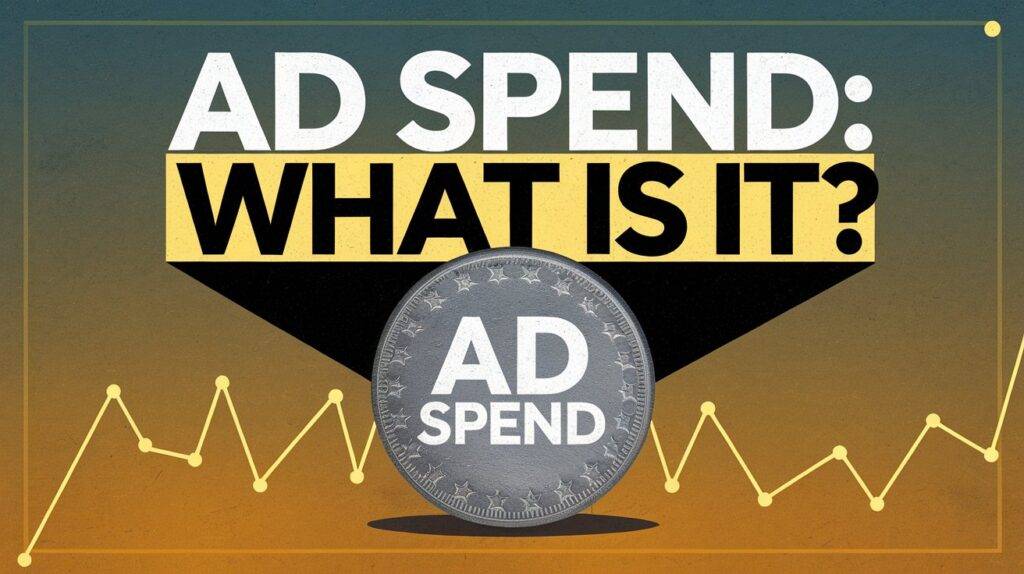Table of Contents
ToggleWhat Is Ad Spend & How to Measure It Effectively
In today’s fast-paced digital world, running successful marketing campaigns is essential for businesses to thrive. One critical factor that often determines the success of these campaigns is how well you manage your ad spend. But what exactly is ad spend, and how can you measure it effectively to maximize your returns? Let’s break it down.
What Is Ad Spend?
Ad spend refers to the total amount of money allocated to advertising a product or service through various marketing channels, such as Google Ads, social media platforms, and other digital or traditional media. It includes costs for paid advertisements, promotions, and sponsored content. Ad spend is a crucial part of your overall marketing budget and directly influences the visibility and success of your brand in the marketplace. When managed effectively, it can help you reach your target audience, increase brand awareness, and boost conversions.

How to Measure Ad Spend Effectively
Measuring ad spend goes beyond tracking the total amount spent. You need to assess the performance and returns on each dollar invested to ensure your campaign is delivering value. Here are key metrics to track:
1. Cost Per Click (CPC)
Cost Per Click refers to the amount you pay each time someone clicks on your ad. It helps you understand how much you’re spending for every user who shows interest in your offer. Lower CPC indicates that you’re getting clicks at a lower cost, which is generally good, but the quality of traffic also matters.
2. Cost Per Mille (CPM)
CPM is the cost of your ad per thousand impressions. This is ideal for campaigns focused on raising brand awareness. If your goal is to have as many eyes as possible on your content, tracking CPM will help you gauge the effectiveness of your ad exposure.
3. Return on Ad Spend (ROAS)
ROAS is the most important metric to measure how much revenue you’re generating for every dollar spent on ads. To calculate it, simply divide the revenue generated from the ad by the total ad spend. A higher ROAS indicates a more successful campaign.
4. Click-Through Rate (CTR)
CTR is the percentage of people who click on your ad after seeing it. A high CTR means your ad is engaging and relevant to your audience. If your CTR is low, you may need to adjust your ad copy, targeting, or creative.
5. Conversion Rate
Ultimately, the goal of most ads is to drive conversions, whether it’s making a purchase, signing up for a newsletter, or filling out a form. Tracking your conversion rate is essential to see how well your ad spend translates into actual business outcomes.
Best Practices for Managing Ad Spend
Here are some tips to help you manage and optimize your ad spend for better results:

1. Set Clear Goals
Define what you want to achieve with your ad campaign. Whether it’s generating leads, driving traffic, or increasing sales, having clear goals will guide how much you should spend and where to allocate your budget.
2. Use A/B Testing
Test different versions of your ads to see which one performs better. This helps you identify what resonates most with your audience, ensuring you’re not wasting money on ineffective ads.
3. Monitor Campaigns Regularly
Keep a close eye on your campaigns and make adjustments when necessary. Digital marketing platforms like Google Ads and Facebook Ads provide insights that can help you optimize your spend based on real-time performance.
4. Allocate Budget Wisely
Not all platforms work equally for every business. Identify the channels that give you the best returns and allocate more of your budget there. Continuously refine your strategy based on which platforms bring the most conversions at the lowest cost.
Conclusion :-
Effectively measuring and managing your ad spend can make or break your marketing campaigns. By tracking key metrics such as CPC, ROAS, and conversion rate, you can ensure that every dollar spent is contributing to your business’s growth. Whether you’re just starting out or looking to improve your existing campaigns, understanding ad spend is essential to maximizing your marketing ROI.

